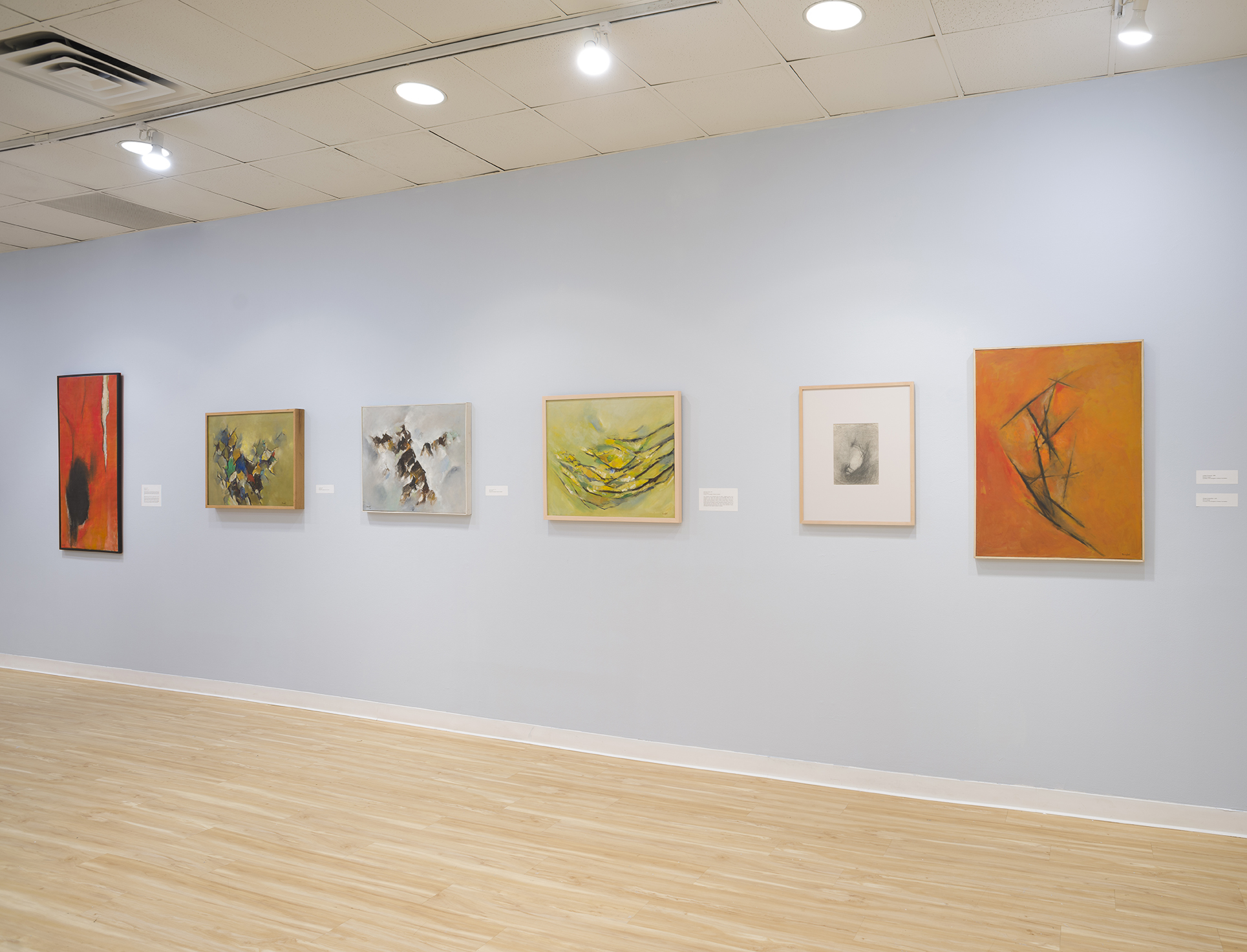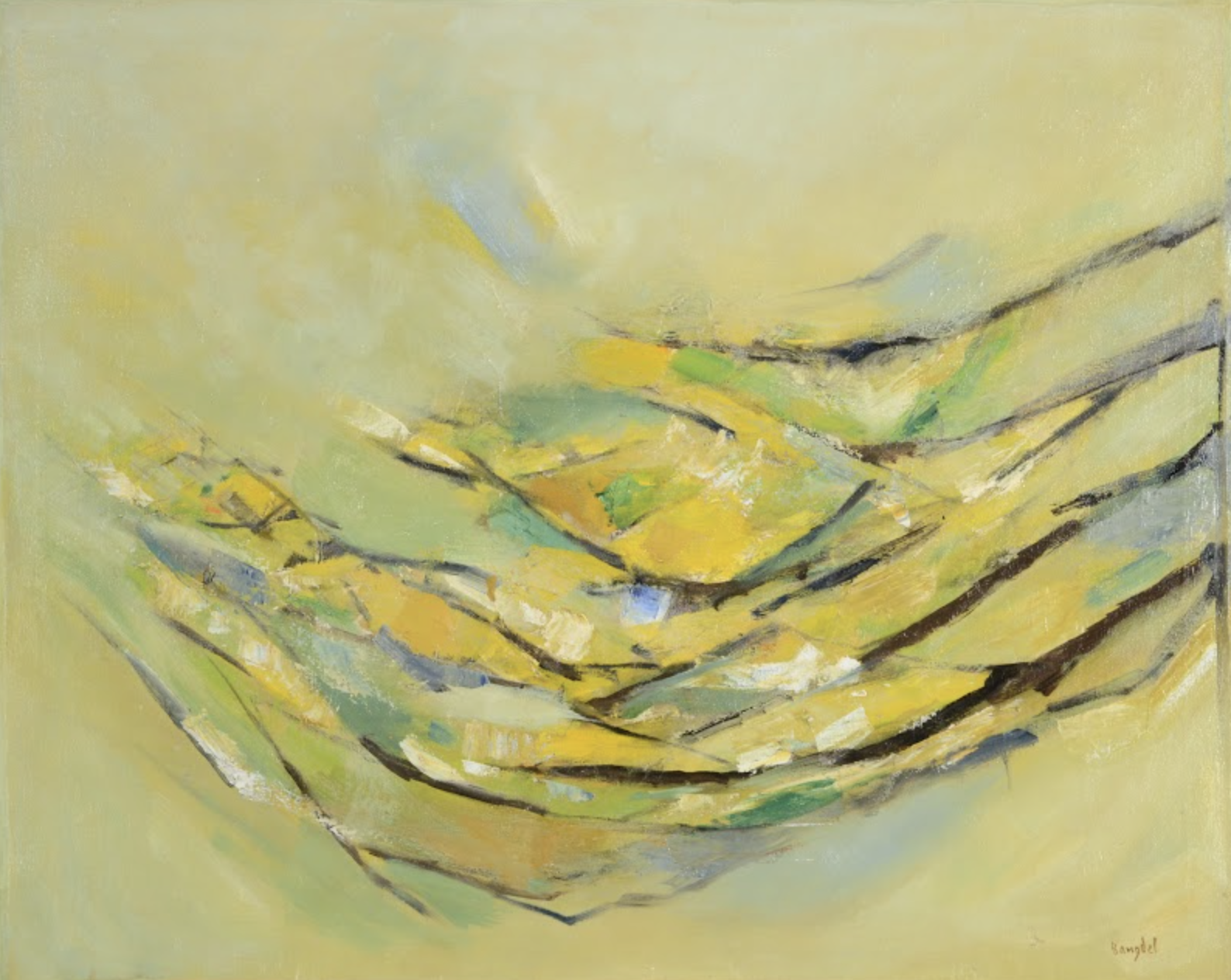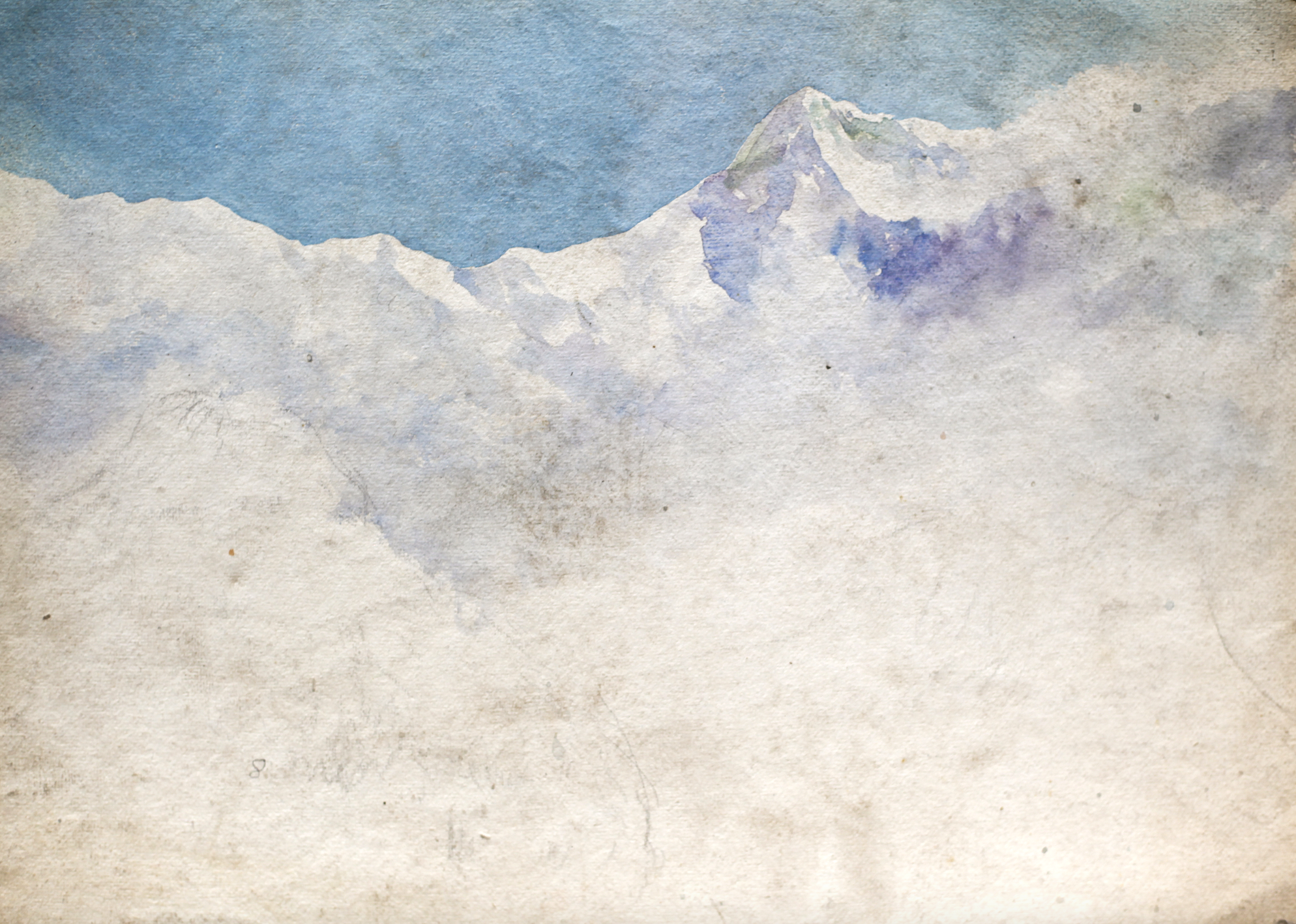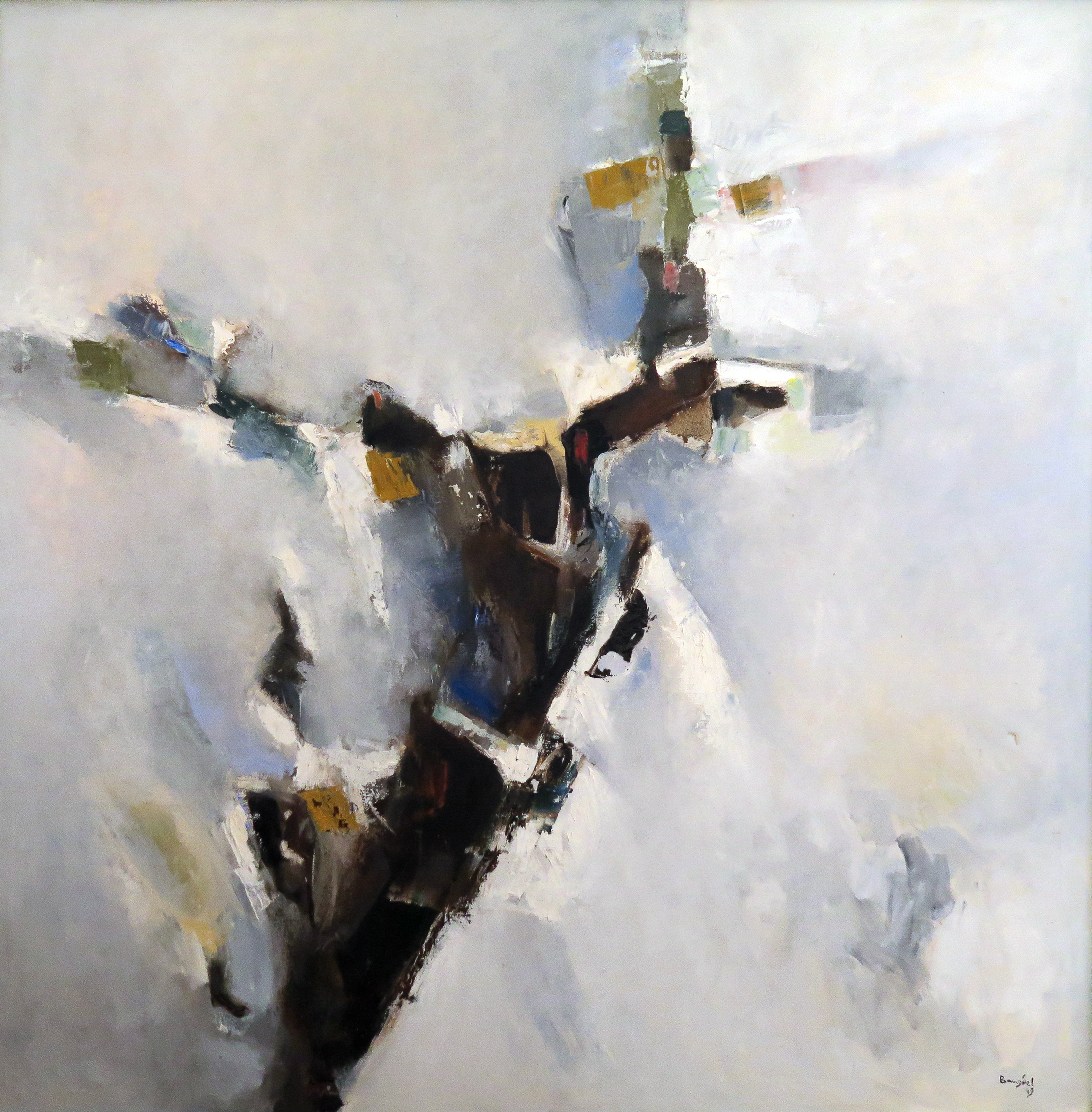Lain Singh Bangdel
Moon over Kathmandu
January 27 - April 9, 2022
January 27 - April 9, 2022

Image: Lain Singh Bangdel, Moon over Kathmandu, 1962, oil on canvas, 32 x 22”,
Collection of Mervin Stevens.
Opening Reception: Thursday, January 27, 2022, 4:30-7:30p
The Yeh Art Gallery, St. John’s University is pleased to announce Lain Singh Bangdel: Moon over Kathmandu, the first solo museum exhibition in the United States by Nepal’s preeminent modern artist Lain Singh Bangdel (1919-2002). Moon over Kathmandu is also Bangdel’s first posthumous solo exhibition outside Nepal. A twentieth-century polymath, Bangdel became an acclaimed novelist, art historian, preservationist, academician, and painter who played a pivotal role in shaping the history of art in South Asia. For the first time, Moon over Kathmandu assembles approximately twenty of Bangdel’s paintings to chart the artist’s pioneering pursuit of abstraction that would help define a modern Nepal.
The exhibition will open on Thursday, January 27, 2022, with a reception from 4:30-7:30pm, and will remain on view through April 9, 2022.
Born on a tea plantation in Darjeeling, India into a community of Nepali migrant workers, Bangdel remained culturally connected to his homeland of Nepal until his first visit in 1961. This exhibition will explore how his signature vocabulary of abstraction crystallized upon his homecoming to Nepal at the behest of King Mahendra, and B.P. Koirala, the country’s first democratically elected prime minister. This exhibition suggests that Bangdel developed his abstraction to formulate a visual language for an increasingly modern Nepal, which had exited its self-imposed isolation from the outside world in 1951. This exhibition proposes that Bangdel’s cellular abstraction emerged from a variety of sources, including the vernacular architecture of South Asian cities like Kolkata (formerly Calcutta) and Kathmandu, as well as the exalted peaks of the ever-present Himalayas. Bangdel’s abstract paintings like Moon over Kathmandu (1962) and Abstract II (1969) advanced his belief in the sublime and rugged majesty of the world’s tallest mountain range. As such, the barrier that once separated Bangdel from Nepal became the subject that most connected him to his homeland, nourishing his artistic sensibility.
In the years leading up to his triumphant return to Nepal, Bangdel lived a remarkable life, embedding himself with intellectual circles in Independence-era Kolkata, London, and Paris. In 1939, he left the tea fields of Darjeeling to enroll in Kolkata’s noted Government College of Art & Craft. Here, Bangdel studied with Zainul Abedin, who would become one of Bangladesh’s foremost modern artists and an important documentarian of the Bengal Famine (1943-45), a cataclysmic event that would affect Bangdel’s art and writing for decades. After graduating, Bangdel found work as a commercial artist at the Kolkata-based firm D.J. Keymer, where he formed a lifelong friendship with acclaimed Indian filmmaker Satyajit Ray. During this period, Bangdel produced paintings of everyday life in Bengal, including Kolkata’s impoverished suburbs, and focused his attention on writing in Nepali, publishing several novels and founding the literary journal Prabhat (Dawn).
In 1952, Bangdel left Kolkata to further his education and training in London and Paris. In connecting with the Asian diaspora’s artistic community, he hosted dinners in his Paris flat, where he engaged with the noted Indian modernists M.F. Husain, F.N. Souza, and Paritosh Sen. Eager to study the work of European modernists and old masters alike, Bangdel traveled extensively throughout Europe with his wife, Manu Thapa, all while publishing Nepali-language books and travelogues for audiences in his homeland. His experiments in abstract painting began in Europe, as seen in the exhibition’s cubist-inflected Transformation (1956), as well as Himalaya (1954), an ethereal imagining of Bangdel’s homeland. In 1961, after a formal request from King Mahendra, Bangdel and his wife left London for Nepal. The experience cemented his desire to, as Koirala implored him in a 1957 letter, “organize [Nepal’s] aesthetic movement.” This call to action would ultimately lead to his 1962 solo exhibition in Nepal, his first in the country. Moon over Kathmandu thus brings to life the many notable contributions of Bangdel to the global history of modern art.
Lain Singh Bangdel: Moon over Kathmandu is organized by Owen Duffy, Ph.D., Director of the Yeh Art Gallery, St. John’s University with the support of Bibhakar Shakya, Ph.D., Founder and Chairman of the Bangdel & Shakya Foundation, and Kerry Lucinda Brown, Ph.D., Professor of Art History, Savannah College of Art & Design.
This exhibition is generously supported by an anonymous donor and the Rev. Al Shands.














